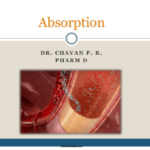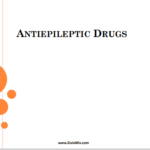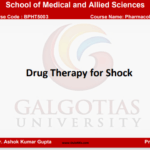Word ‘VETERINARY’ is derive from the Latin word
VETERINAE meaning WORKING ANIMALS.
The first veterinarian was Thomas Browne.
Veterinary medicine is the branch of medicine that
deals with the prevention, diagnosis and treatment
of disease, disorder and injury in non- human
animals.
www.DuloMix.com
Just like the humans, animals also require the medicine
to cure the physical or the mental disability.
There are various routes through which the drug or
dosage form are administered.
Veterinary dosage forms are essentially pharmaceutical
drugs product in the form in which they are marketed
for use typically involve a mixture of a active drug and
non-drug component (excipients).
www.DuloMix.com
Veterinary science is vital
to the study and
protection of animal
production practices,
herd health and
monitoring spread of
disease like swine flu,
chikengunea etc.
www.DuloMix.com
➢ Dog prefers Beef, Chicken, Cheddar Cheese, Molasses,
Peanut Butter, Liver, Raspberry, Strawberry.
➢ Cat prefers Tuna, Chicken, Beef, Cheddar Cheese, Peanut
Butter, Liver, Butterscotch.
➢ Bird prefers Grape, Mandarin Orange, Tutti-Frutti,
Molasses, Pina Colada.
➢ Horse prefers Apple, Creamy Caramel, Molasses,
Licorice, Cherry.
➢ Rabbit prefers Banana Ferret prefers Bubble Gum,
Molasses.
➢ Gerbils prefers Mandarin Orange, Tutti-frutti
www.DuloMix.com
✓ Parasitic diseases
1. Strongyloidea (Swine)
2. Ancyclostomatoidea (Horse)
3. Siphonaptera (Cattles)
4. Ascaridoidea (Cats and dogs)
✓ Bacterial diseases
1. Yersiniosis (Swines)
2. Salmonellosis (Chickens)
3. Q-fever (Cattles)
4. Rabies (Dogs)
www.DuloMix.com
✓ Diseases transmitted from animals to human
These are called as Zoonotic diseases. All
infectious diseases can transmit from
animals. Example of zoonotic diseases
includes- Plague, Rabies, Lyme diseases,
Ringworm, Tick paralysis, Swine flu,
Giardiasis, Chickengunia.
www.DuloMix.com
❖Tablets and Bolus
❖Feed additives
❖Drinking water medication
❖Oral paste and Gels
❖Drenchers
❖Tubing product
www.DuloMix.com
TABLET:
➢ Solid dosage forms are less popular for animals
because the administration of solid dosage forms can
be time consuming and uncertain.
➢ A dog or cat may not readily accept the tablet and
one is forced to hide the tablet in the food.
➢ The animal will be dosed on the basis of weight, the
amount of drug given to a large animal such as a cow
may be considerable.
➢ For drugs such as the sulphonamides, which are
dosed at relatively high rates.
www.DuloMix.com
LAMISOLE -300 is highly effective
and is easily available in the
market. It is frequently prescribed
against all common round worms
of G.I. tract and lung worms in
poultry, cattle & sheep.
It contains Levamisole HCl BP
300MG .
Dosage prescribed is 7.5mg
Levamisole / kg bwt
Levamisole HCL BP
300mg
www.DuloMix.com
BOLUS:
Capsule shaped or cylindrical shaped tablet called a
Bolus.
The instrument used to hold the bolus and drop into
the animal’s mouth is called a balling gun, consisting
of a barrel with a plunger that can hold one or more
boluses. These are less popular for animals because
of their administration may be time consuming,
hazardous, uncertain in tablet swallowing, and they
may spit out or dropped from the mouth. This can be
overcome by use of acceptable odours, flavours,
sweeteners.
www.DuloMix.com
Drugs are given on the basis of weight or body
surface area. The labelling of solid dosage forms,
must be stated in mg or g per kg of body weight.
A special tablet BOLUSE is commonly used to
provide larger doses, it can range from 3 to 16 mg in
weight
www.DuloMix.com
27g Copper and 500mg
Selenium Bolus for Cows and
Cattle. Long acting, Slow
Release Intra-ruminal Copper
and Selenium Bolus for
Routine supplementation of
Cows and Cattle Balling/ Bolus gun
Use at 6 Month Intervals. It
provides a long acting, slow
release Copper and Selenium
supplementation in bolus
form.
27g Copper & 500mg
Selenium Long Acting,
Slow Release, Intra-
wwrwu.DmuloiMnixa.colmBolus
➢ Feed additives are preparations used in veterinary
medicine to deliver the API(s) via the water or food
given to animals.
➢ The feed additive may be either a solid or liquid and
sometimes is called a premix.
➢ Feed additives are further subdivided into three types.
TYPE A medicated feeds
TYPE B medicated feeds
TYPE 3 medicated feeds
www.DuloMix.com
Type A medicated feeds are products containing one or
more animal APIs, and that are sold to licensed feed
mills or producers and are intended to be further
diluted by mixing into food or water prior to
consumption by the animals. Because these
preparations are not actually dosed to animals, they
are not considered dosage forms.
www.DuloMix.com
➢ Type B medicated feeds are products that contain a
type A medicated article, or another type B medicated
feed, plus a substantial quantity of nutrients (not less
than 25% of the total weight).
➢ Like type A medicated articles, type B medicated feeds
are intended for mixture with food or water and
additional nutrients, are not to be fed directly to the
animals, and are not considered dosage forms.
www.DuloMix.com
➢ Type C medicated feeds are made from type A medicated
articles or type B medicated feeds and are prepared at
concentrations of the API appropriate for administration to
animals by mixing in food or water.
➢ Administration of type C medicated feeds can be
accomplished by blending directly into the feed; top-
dressing the preparation onto the animal’s normal daily
rations; or heating, steaming, and extruding into pellets
that are mixed or top-dressed onto the animal’s food.
➢ Another form of type C medicated feeds is compressed or
molded blocks from which animals receive the API or
nutrients via licking the block.
www.DuloMix.com
Vetbiolyte Supplement”
this range of feed
supplement contains
Sodium chloride, Calcium
lactate, Magnesium
sulphate, Calcium
gluconate, Potassium
chloride, Sodium Citrate,
Sodium bicarbonate,
Ascorbic acid, Dextrose
monohydrate and
Carriers. Available in
packed size of 250 gm, Vetbiolyte
500 gm and 1 Kg pack supplement
size.
www.DuloMix.com
Type A medicated articles that are liquids are
produced by mixing the API(s) with a suitable solvent
(e.g., water or propylene glycol).
The API(s) is usually dissolved to produce a solution,
but suspension products also could be produced.
Type A medicated articles that are solids are
produced by blending the API with excipients to
provide a uniform dosage form when mixed with the
animal’s feed.
www.DuloMix.com
Type A medicated articles are added to the feeds
(e.g., ground corn or oats) during the milling process
of making feeds.
Liquid type A medicated articles often are sprayed in
at set rates, and solid type A medicated articles are
added slowly to aid in creating uniform distribution
in the feeds.
Liquid type A medicated articles can also be mixed in
with bulk water sources at prescribed amounts.
www.DuloMix.com
Often the API is first mixed with an excipient (e.g.,
starch ) that has a similar particle size and can help
distribute the API uniformly throughout the final drug
product.
This pre-blend is then mixed with bulking excipients
(e.g., calcium carbonate or soybean hulls).
Mineral oil may be added to aid uniform distribution,
to prevent particle segregation during shipping, and
to minimize formation of airborne API particles
during production of type B or C medicated feeds.
Type B or C medicated feeds are produced at
licensed feed mills or by farm producers.
www.DuloMix.com
Oral liquids are one of the easier dosage forms to develop.
The main challenges are finding a vehicle that result in
adequate chemical stability while achieving a solution.
The first vehicle choice will be water. Good understandings of
the pH and temperature effect on solubility are needed to
ensure no precipitation of the marketed product when
exposed to abrupt changes in temperature and pH
If the water does not solubilise the drug, a co-solvent system
is next explored.
Vehicles to consider include ethanol, propylene glycol, (low
molecular weight), glycerin and triacetin as examples.
www.DuloMix.com
These can be used alone or in combination to give a truly
nonaqueous system.
In some cases cosolvents with oleaginous vehicles may be
utilized to solubilize the drug
A common form of medicating animals for herd or flock
health is through the drinking water. The medications are
formulated as:
(a) Dry powders for reconstitution into liquid concentrates to
be added to the drinking water or to be added directly to the
drinking water or,
(b) Concentrated solutions, which are dispensed directly in
drinking water or injected into the drinking water through
medication proportioners incorporated into watering lines.
www.DuloMix.com
The advantage of medicating through drinking water versus
feed is that sick or unhealthy animals will continue to drink
water whereas they may not eat.
The use of water as the drug medium is limited, however, by
the solubility of the drug moiety.
Since animals drink twice as much water as they consume
feed, the concentration of the drug in the water needs to be
only half that of feed.
This Automatic metering devices or medication proportions
are used for treating large numbers of animals.
The powder medication is dissolved at the time of
administration into water to make a stock solution, which is
proportioned into the drinking water system as the water is
consumed by the animals. tor may overcome the problem of
limited solubility
www.DuloMix.com
Pastes and gels are semi-fluid masses that can be
administered from a flexible tube, syringe, package,
or other specialized dosing device.
The advantage of a paste or gel dosage form is that it
cannot be expelled from the animal’s mouth as
readily as a tablet or liquid.
A paste of the proper consistency adheres to the
tongue or buccal cavity and is not readily dislodged.
The animal will eventually end up swallowing it
www.DuloMix.com
Biotene Maintenance Gel is pet toothpaste that
provides long-lasting protection to your pet’s
teeth and gums.
The plaqueremoving gel contains Bio-Active
Enzymes that effectively inhibit odor-causing
bacteria.
www.DuloMix.com
Paste Dispensers
Paste guns
Paste syringes
Squeeze
Squeeze tubes
www.DuloMix.com
Paste guns- In a study conducted by Ray and Brown,
175 weaned calves were used to measure different
dosage forms of anthelmintics: paste, bolus, injections
and drench.
Paste syringes- Syringes can be designed to deliver one
single dose which can be varied according to the
weight of the animal or they can be set to deliver a
limited number of multiple dose paste boluses.
Squeeze bottles or Tubes- Pet Kalorie by Hoover-
Lockhart, Shawnee, Kanas is a high calorie dietary
supplement in paste form used to treat malnutrition in
piglets.
www.DuloMix.com
Three types of vehicles used in the formulation of paste
and gels are
a. Aqueous bases
b. Oil or oleaginous bases
c. Organic solvents
a. Aqueous base is the least expensive vehicle and poses no
toxicity. Glycerine, glycols, natural or synthetic gums,
polymers used to increase the viscosity, cohesiveness and
plasticity. To overcome the separation of water gel, can use
absorbing materials like MCC, kaolin, colloidal silicon
dioxide, starch.
b. Oleaginous bases consist of vegetable oil with aluminium
monostearate, colloidal silica, and xanthan gum.
c. Organic solvent Glycerine, propylene glycol and
polyethylene glycol with carboxy vinyl polymers provide
organic bases.
www.DuloMix.com
1. When placed in the palm and hand is inverted it
should remain without falling
2. When ejected from the applicator, should break
cleanly
3. No paste should continue to ooze from the
applicator
4. Free from air bubbles
www.DuloMix.com
The administration of drug to animals by pouring a
liquid medication down an animal’s throat is called
“drenching”.
The oral administration of cattle, sheep and goats by
pouring a liquid product down the animal’s throat is
known as drenching.
It is performed using either drenching syringe or
drenching guns.
Thickening agents which promote the thixotropy of the
product
www.DuloMix.com
Drenching guns provide an easy, relatively fast means of
orally administering solutions or suspensions of either
an aqueous or oily nature.
Liquid drench guns are of three
types:
1. Single dose gun
2. Multidose drench gun
3. Automatic drench gun
www.DuloMix.com
SINGLE DOSE GUN: This syringe gun is primarily designed for
large volume distribution. It is filled by pushing the piston to the
end of its stroke and then drawing it back after dipping the end
into the liquid to be injected. The free end of the tube is then
introduced into the mouth of the animal.
MULTIDOSE DRENCH GUN: This gun is used to administer
doses of drench in step quantifies.
AUTOMATIC DRENCH GUN: Automatic drench guns are so
designed that the chamber refills directly after injection from a
large volume reservoir which is usually strapped to the
operators back. For example: May and Baker Ltd. Manufacture,a
worm drench for cattle, sheep and goats which require no
addition of water, mixing or transfer of drench solution to carry
packs.
www.DuloMix.com
Tubing products
Oral medication is often administered to horses using a
stomach tube.
A flexible tube is passed up through the horse nostrils
and down into the stomach.
An aqueous solution or suspension is desired so that
the product can be flushed through the water.
www.DuloMix.com
Horses are administering certain medications by
running a lubricated tube up through the nostrils and
down into the stomach.
A funnel attached to the tube is held above the
horse’s head and liquid medication is poured down
the tube. Known as tubing. Normal dose by this
method is 10 OZ. Wetting agents are used to
increase the flow rate. Thickening and suspending
agents are contraindicated to resist the flow
www.DuloMix.com
Syringes, injections, pumps and
funnels may be used to deliver
the medication to an
esophageal tube which is
inserted into the stomach
through a speculum either in
the mouth or a nostril.
www.DuloMix.com
o Review Article of SHRADHA TIWARI*, SACHIN
MITKARE, PALLAVI BHANGALE(International Journal of
Applied Pharmaceutics Received: 30 Dec 2013, Revised
and Accepted: 26 Jan 2014)
o Review article of AVINASH B.DAREKAR, SWAPNIL R.
LAHAMAGE, RAVINDRA.B. SAUDAGAR
www.DuloMix.com
THANK YOU
www.DuloMix.com










